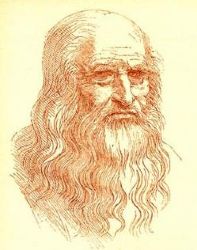
“Obstacles cannot crush me. Every obstacle yields to stern resolve. He who is fixed to a star does not change his mind.” (Leonardo da Vinci, 1452-1519)
The Renaissance
Leonardo da Vinci
There are periods in human history that represent fundamental turning points. Such periods are characterised by great social, political and cultural transformations. Ideas, habits and traditions that have been accepted unquestionably for centuries or even millennia are suddenly challenged. Society finds itself in a state of ferment, a ferment that also affects the minds of men and women. A way of life that has become old and decrepit begins to totter. Though people do not understand what is happening, everyone feels the approach of a fundamental change. Such a period of social upheaval is necessarily reflected in profound changes in religion, philosophy and art.
The sixteenth century saw the culmination of the expansion of the power of the bourgeoisie in one of the most remarkable periods in human history. Known in Germany as the Reformation, in Italy as the Rinascimento and in France as the Renaissance, it gave rise to an extraordinary flowering of culture, art and science. Never before or since has the world witnessed such a gallery of heroes and geniuses. To this day the artistic productions of this unique period in history remain unequalled. It set a standard by which the artistic achievements of all subsequent history are measured.
Engels describes the Renaissance thus:
“It was the greatest progressive revolution that mankind had so far experienced, a time which called for giants and produced giants – giants in power of thought, passion and character, in universality and learning. The men who founded the modern rule of the bourgeoisie had anything but bourgeois limitations. On the contrary, the adventurous character of the time inspired them to a greater or lesser degree. There was hardly any man of importance then living who had not travelled extensively, who did not speak four or five languages, who did not shine in a number of fields. Leonardo da Vinci was not only a great painter but also a great mathematician, mechanician, and engineer, to whom the most diverse branches of physics are indebted for important discoveries. Albrecht Durer was painter, engraver, sculptor, and architect, and in addition invented a system of fortification embodying many of the ideas that much later were again taken up by Montalembert and the modern German science of fortification. Machiavelli was statesman, historian, poet, and at the same time the first notable military author of modern times. Luther not only cleaned the Augean stable of the Church but also that of the German language; he created modern German prose and composed the text and melody of that triumphal hymn imbued with confidence in victory which became the Marseillaise of the sixteenth century.” (Engels, Dialectics of Nature, Moscow, 1974, pp. 20-2.)
The roots of this extraordinary period are to be found in the last half of the fifteenth century, when the long decline of feudalism in Western Europe gave rise to the great absolute monarchies, which anticipated the modern European nation states. By leaning on the burgers in the towns, the absolute monarchies succeeded in breaking the power of the old feudal nobility. The bourgeoisie utilised its leverage to force concessions from the central power in the form of charters and royal privileges. Here, in outline, we already see the thrusting ambition and rising power of the bourgeoisie, which finally resulted in the overthrow of the monarchies in England and France.
Art and rise of the bourgeoisie
The youthful bourgeoisie was in a hurry to cast off the stinking rags of feudalism. It eagerly embraced new ideas, new philosophies, new science and new art forms. Nowadays, the relationship between the rise of the bourgeoisie and the struggle against the dominant ideology of the Roman Catholic Church is clear to all. The struggle between hostile classes was reflected in the struggle between rival religions that found its expression in what we call the Reformation, the Dutch and English revolution and the religious wars that raged in Europe throughout the 17th century. But long before this, the bourgeoisie and the masses were involved in a life-and-death struggle against the Church.
With the decay of feudalism and the rise of the bourgeoisie, new artistic and literary forms begin to make their appearance. It arose in the wealthy Flemish city states, with their new class of wealthy merchants. The new methods of capitalist production found their expression in art. Jan van Eyck, one of the outstanding figures of this school, ran workshops with many apprentices – just like the early factories that revolutionised the productive process. They were, in effect, art factories. Van Eyck himself was not only an artist but an alchemist, credited with the invention of oil painting.
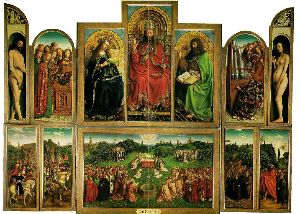
Gent alterpiece by Jan van Eyck
From about 1420 portraits become much more realistic. The faces are recognisable individuals. This was a genuine revolution in art. The new art arose first in Italy and Flanders – especially in Ghent and Bruges (the so-called Flemish primitives). In reality, there is nothing primitive about these paintings. They are extremely sophisticated, complex works, inspired by a keen sense of observation and vivid realism. Particularly striking is the effect of light and shade, which are strongly contrasted.
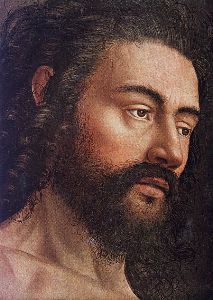
Ghent Altarpiece close up of Adam (upper left corner)
The new style of art involved revolutionary techniques of great sophistication, which enabled the artist to depict details never seen before – the gold thread in a dress, the folds of a cloak, the gleaming of sunbeams on armour, the reflection on a polished mirror, which pose special technical difficulties. The modern British painter David Hockney believes that these artists used techniques evolved thanks to recent scientific discoveries in optics: the camera obscura and the lens in order to achieve the almost photographic quality of their realism. A case in point is the celebrated wedding portrait of van Eyck, with its mirror and chandelier.
The new realism was also connected with a new spirit of invention, the study of proportion and anatomy, the invention of new colours and above all the discovery of perspective. Mathematical perspective of the Renaissance type was unknown in the Middle Ages. Before the Renaissance, God the Father is shown as much bigger than human figures, thus emphasising human insignificance in relation to the Almighty. Once again, it was the Renaissance, that wonderful dawn of the human spirit that broke the mould.
By this time the towns everywhere had acquired a considerable degree of independence, although formally they remained under the rule of the absolute monarchy. Long before the bourgeoisie demanded “cheap government”, they demanded cheap religion. The conflict between the nascent bourgeoisie and the Roman Catholic Church – the central conflict in the entire period of the birth of capitalism – was partly determined by the fact that the Church provided the main moral and religious buttress for the existing feudal order.
This was the period when the bourgeoisie was playing a progressive role, struggling to free itself from the shackles of feudalism that were impeding its development. The idea of freedom began to take shape in the imagination of men: in the first place, freedom from the dead hand of religion and the Roman Catholic Church, which led eventually to Luther and the Reformation.
Italy
By the early 1400s, the new spirit was stirring in Europe. Even before then, it was anticipated in Italy, the true cradle of European civilization. The great wealth of cities like Florence, Genoa, Milan and Venice, with their powerful ruling families of merchant princes, created the objective conditions for a flourishing of art that was unparalleled since ancient times.
In this seething crucible of intellectual life, new schools of art were springing up, associated with men like Giotto di Bondone. Botticelli, Fra Filippo Lippi, Piero della Francesca, the Bellinis, Giorgione, Della Robbia. Then comes a galaxy of giants: Titian, Michelangelo, Raphael and, towering over all of them, Leonardo da Vinci. These developments in Italy were paralleled elsewhere in Europe: Dürer and Holbein in Germany and Rubens and the Brueghels in the Netherlands.
The new spirit appears, not only in the visual arts but also in literature. The breakthrough is personified in the colossal figure of Dante Alighieri (1265-1321), who can be seen as the last writer of the Middle Ages and the first writer of the new age. Petrarch and Boccaccio were, together with Dante, the greatest literary figures of this period. In Boccaccio’s Decameron we have the germs of the modern novel.
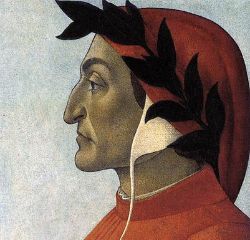
Dante
Machiavelli (1469-1527) was one of the greatest intellects of this age of great thinkers. His modern reputation as an unprincipled intriguer is completely underserved. Actually, he was a great Renaissance scholar and thinker. His Florentine History (which Marx greatly admired) is an early masterpiece of the writing of history. It accurately describes the violent class struggles that raged in the Italian city-states at that time. Machiavelli was the first writer to provide a scientific analysis of the state, shorn of all moralistic and idealistic adornment and to reveal its essence as armed bodies of men.
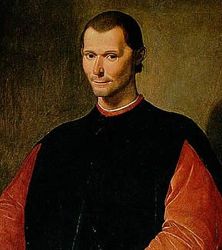
Machiavelli
The new art is intimately connected with the rise of the bourgeoisie. And with the rise of the bourgeoisie we see the rise of individualism in art. This is the age of individualism, the bold assertion of the rights of man. It is also, and for this very reason, the age of the individual portrait. In the Middle Ages, such a thing would have been out of place, if not downright blasphemous. Man’s gaze was supposed to be directed upwards, to the heavens and the life beyond the grave, and not to the vanity of this world.
Until now the proper subject of art was God, not Man. But just as Copernicus and Galileo made the world revolve around the sun, so the humanistic Renaissance world outlook made art revolve around real human beings. Such a thing would have been unthinkable in the medieval period. For the first time we have the faces of real, identifiable men and women. Here is a new and revolutionary element: realism and human intimacy. The spirit of a new age was born: the age of the individual.
It is no accident that Italy played such an outstanding role in the formative period of the Renaissance. Italy (together with the Netherlands) was the birthplace of capitalism. In the cities of northern and central Italy, the nascent bourgeoisie was already flexing its muscles and acquiring its own voice, becoming more and more assertive. Powerful merchant families dominated the life of Florence, as Machiavelli graphically describes in his Florentine History.
As the country where the bourgeoisie first set its stamp on society, laying the basis for a new kind of civilisation, Italy has bequeathed to humanity a glittering galaxy of artists and writers. The first stirrings of capitalism can be seen in Italy in the 13th and 14th centuries, and were accompanied by the most tremendous outburst of artistic creativity. The rise of the Italian bourgeoisie expressed itself as a series of independent city-states. In the absence of a strong central monarchy, the burgers of Florence, Milan, Genoa and other prosperous towns had established city-states, which balanced between Emperor and Pope to maintain their autonomy. These towns were republics in all but name, although they were formally under the protection of monarchs.
However, there was a problem that ultimately stunted the development of capitalism in Italy. The lack of national unity, and the sharp divisions between the city states, encouraged the continual interference of foreign powers. Already during the Middle AgesItalian politics were characterised by the struggle between two opposing factions, the Guelfs and Ghibellines, the former supporting the papacy, the latter supporting the German (Holy Roman) emperors.
This contributed to chronic strife within the cities of northern Italy throughout the 13th and 14th centuries. As a result, for centuries Italy was a battleground in which French, German and Spanish armies fought murderous wars to gain control over the country’s riches. The resulting divisions made it impossible for Italy to develop as a unified nation state. Thus, all the potential of early capitalist development was wasted by internecine conflict, wars and factional strife.
Leonardo da Vinci
Leonardo was the Renaissance man par excellence. More than anybody else, Leonardo was responsible from dragging painting out of the Middle Ages and effecting a genuine artistic revolution. We can already discern the dim outline of this revolution in the paintings of Giotto a hundred years before. Here the faces are more human. Like Leonardo, Giotto did not confine himself to painting but also designed fortifications for 14th century Florence. But the future is present here only in an undeveloped form – as a potential or an embryo. With Leonardo it assumes its fullest development.
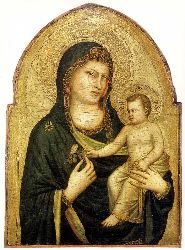
Giottos “Madonna and Child”
As we have seen in the quote above, Engels paid a warm tribute to the man who, most of all, embodied the restless spirit of the age in which he lived. And it may well be Leonardo of whom Engels was thinking when he wrote the following lines:
“[…] The heroes of that time had not yet come under the servitude of the division of labour, the restricting effects of which, with its production of one-sidedness, we so often notice in their successors. But what is especially characteristic of them is that they almost all pursue their lives and activities in the midst of the contemporary movements, in the practical struggle; they take sides and join in the fight, one by speaking and writing, another with the sword, many with both. Hence the fullness and force of character that makes them complete men. Men of the study are the exception – either persons of second or third rank or cautious philistines who do not want to burn their fingers.” (Introduction to The Dialectics of Nature)
His fiercely inquisitive mind turned in one direction and another seeking problems to solve, and in this he mirrored the entire spirit of his age. But at the very moment he had solved one problem he seemed to lose interest in it and go in search of others. For this reason he often left projects unfinished and took a long time to finish those he did complete. He took four years to finish the Mona Lisa. In other cases, he just left paintings for his apprentices to finish for him. It was as if there were not enough worlds for him to conquer, and not enough lives for him to live.
He was an architect and an engineer who planned the tunnelling of mountains and the connecting of rivers through canals. He anticipated Copernicus’ theory of the movement of the earth and Lamarck’s classification of animals into vertebrates and invertebrates. He discovered laws of optics, gravitation, heat and light. He was obsessed with the flight of birds and spent much time studying the possibility of building a flying machine.
Da Vinci’s anticipation of the helicopterAmong his numerous drawings we find one that anticipates a helicopter. He also designed a tank and a parachute, several centuries before these things found a central use on the battlefields of the Second World War. He also developed a dialectical philosophy, in which will was said to be the energy of life, and this adequately sums up the inner meaning of his own life, which achieved much more than several normal lifetimes could accomplish.
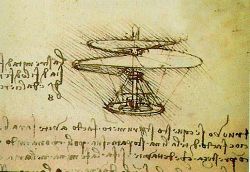
Da Vinci’s anticipation of the helicopter
[To be continued…]

